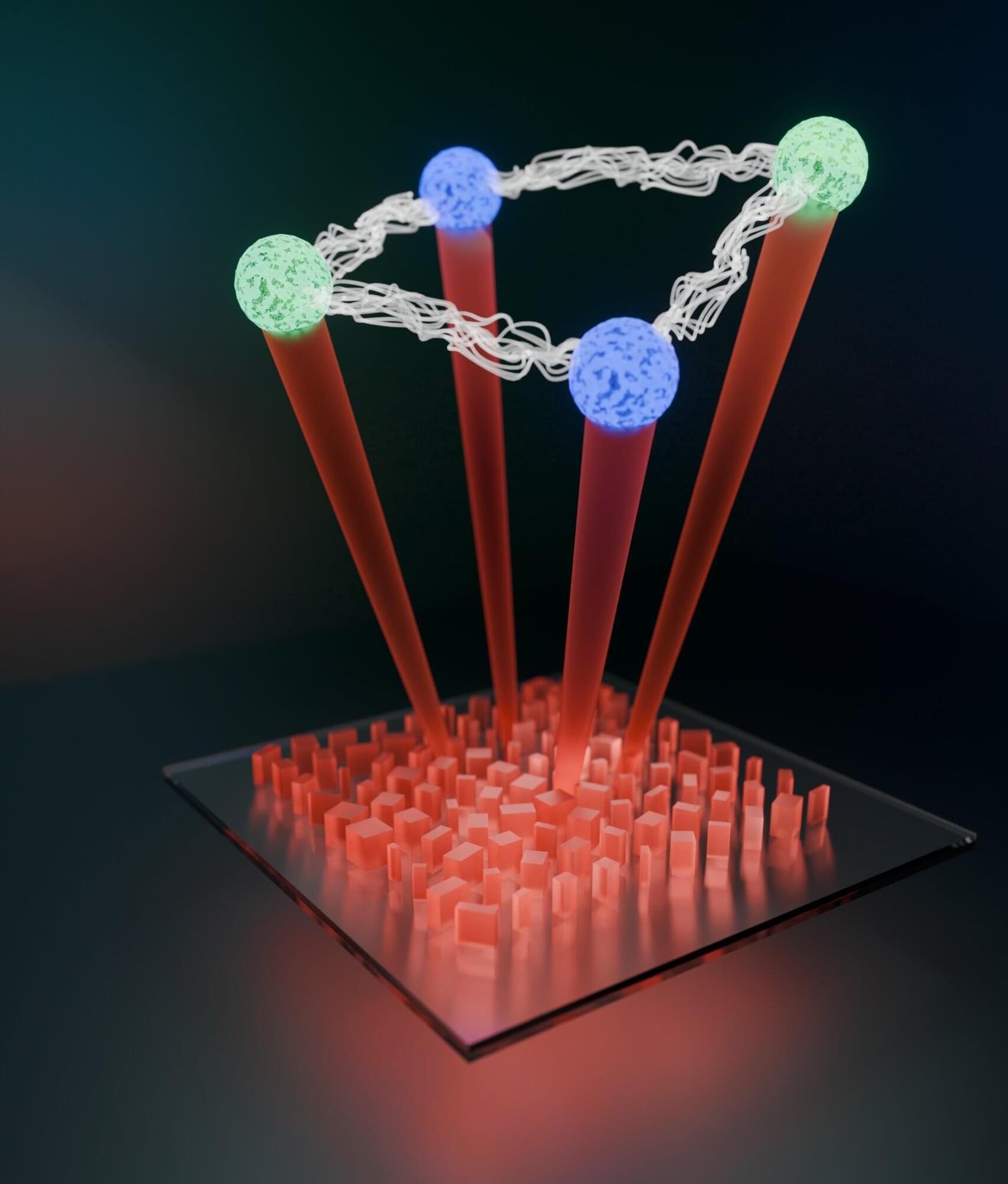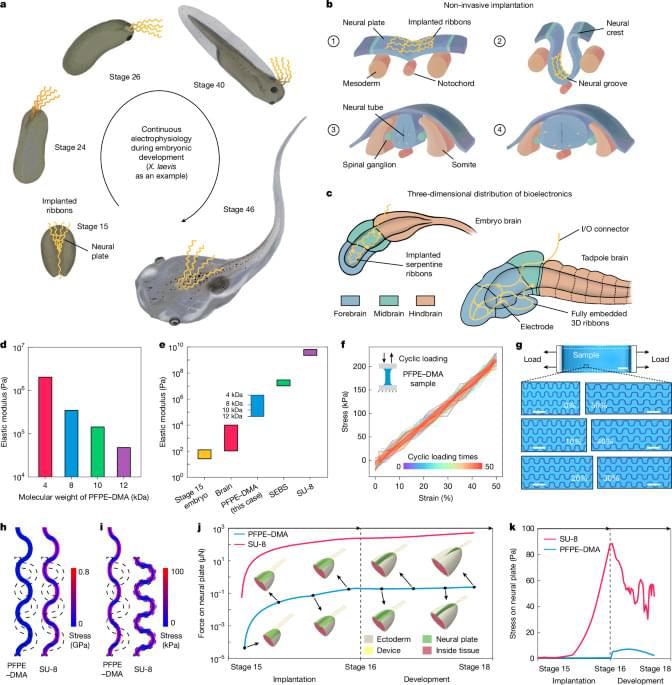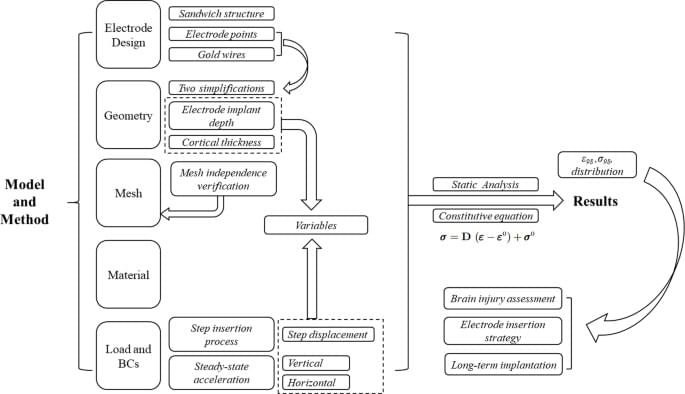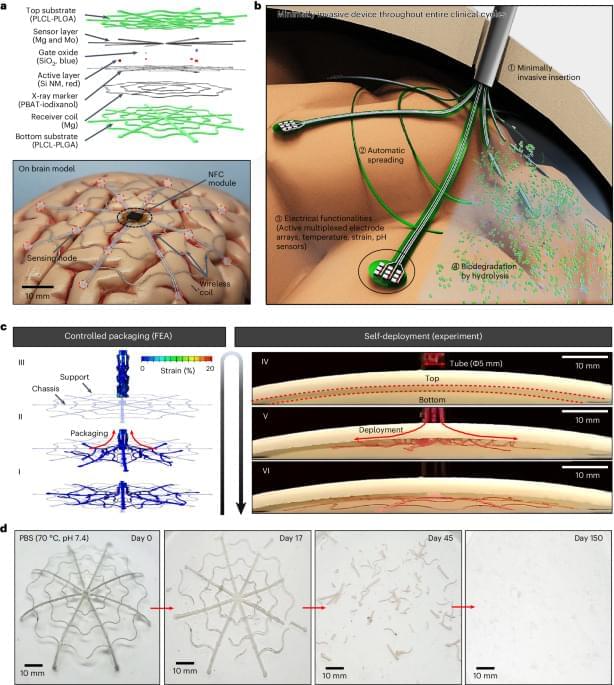Alzheimer’s disease spreads unevenly through the brain, and new mathematical modeling may help explain why.



In the race toward practical quantum computers and networks, photons—fundamental particles of light—hold intriguing possibilities as fast carriers of information at room temperature.
Photons are typically controlled and coaxed into quantum states via waveguides on extended microchips, or through bulky devices built from lenses, mirrors, and beam splitters. The photons become entangled—enabling them to encode and process quantum information in parallel—through complex networks of these optical components. But such systems are notoriously difficult to scale up due to the large numbers and imperfections of parts required to do any meaningful computation or networking.
Could all those optical components be collapsed into a single, flat, ultra-thin array of subwavelength elements that control light in the exact same way, but with far fewer fabricated parts?

Acute brain injuries (ABIs) pose a substantial global burden, demanding effective prognostic indicators for outcomes. This study explores the potential of urinary p75 neurotrophin receptor (p75NTR) concentration as a prognostic biomarker, particularly in relation to unfavorable outcomes. The study involved 46 ABI patients, comprising sub-cohorts of aneurysmal subarachnoid hemorrhage, ischemic stroke, and traumatic brain injury. Furthermore, we had four healthy controls. Samples were systematically collected from patients treated at the University Hospital of Turku between 2017 and 2019, at early (1.50 ± 0.70 days) and late (9.17 ± 3.40 days) post-admission time points. Urinary p75NTR levels, measured by ELISA and normalized to creatinine, were compared against patients’ outcomes using the modified Rankin Scale (mRS). Early urine samples showed no significant p75NTR concentration difference between favorable and unfavorable mRS groups. In contrast, late samples exhibited a statistically significant increase in p75NTR concentrations in the unfavorable group (p = 0.033), demonstrating good prognostic accuracy (AUC = 70.9%, 95% CI = 53–89%, p = 0.03). Assessment of p75NTR concentration changes over time revealed no significant variation in the favorable group (p = 0.992) but a significant increase in the unfavorable group (p = 0.009). Moreover, p75NTR concentration was significantly higher in ABI patients (mean ± SD 40.49 ± 28.83–65.85 ± 35.04 ng/mg) compared to healthy controls (mean ± SD 0.54 ± 0.44 ng/mg), irrespective of sampling time or outcome (p < 0.0001). In conclusion, late urinary p75NTR concentrations emerged as a potential prognostic biomarker for ABIs, showing increased levels associated with unfavorable outcomes regardless of the specific type of brain injury. While early samples exhibited no significant differences, the observed late increases emphasize the time-dependent nature of this potential biomarker. Further validation in larger patient cohorts is crucial, highlighting the need for additional research to establish p75NTR as a reliable prognostic biomarker across various ABIs. Additionally, its potential role as a diagnostic biomarker warrants exploration.




Peng, L., Wang, L., Wu, S. et al. Sci Rep 15, 19,938 (2025). https://doi.org/10.1038/s41598-025-04737-3


